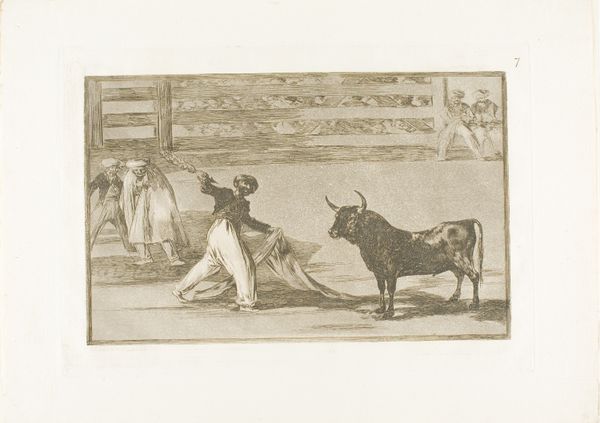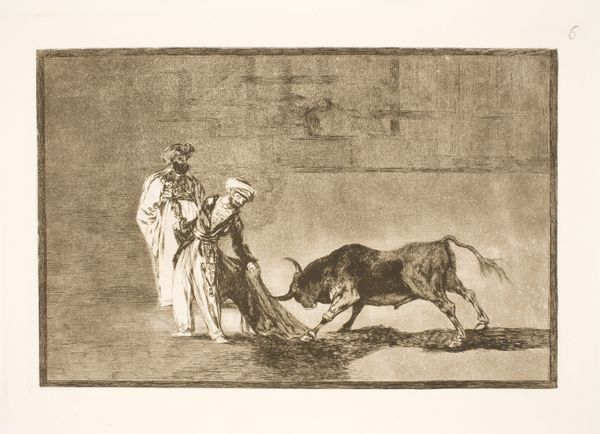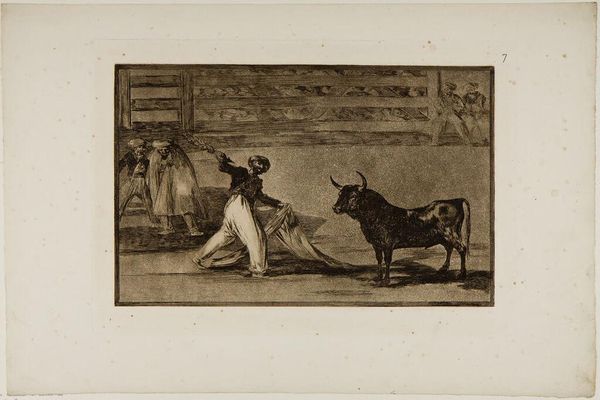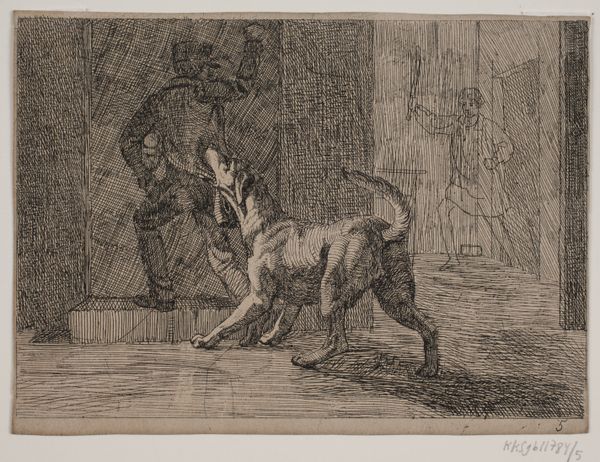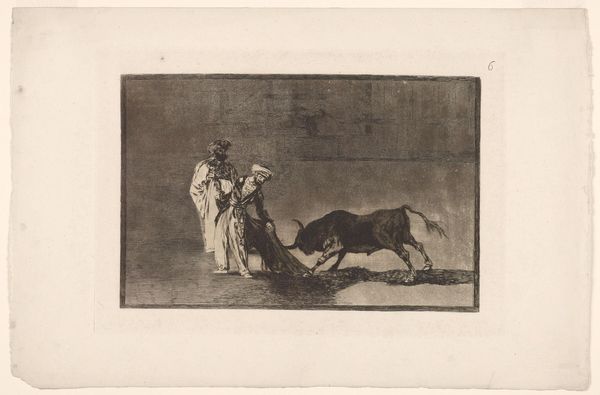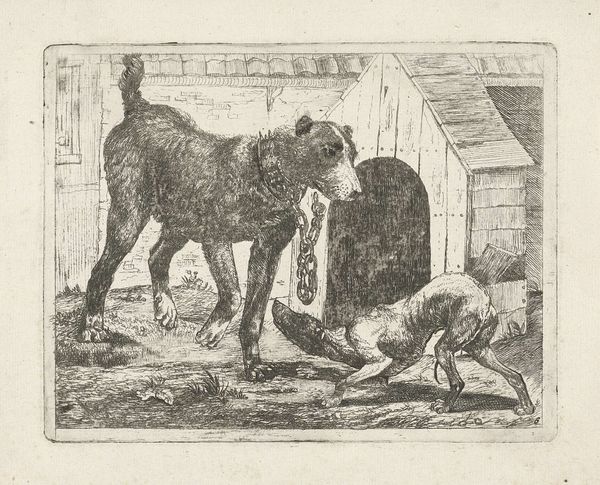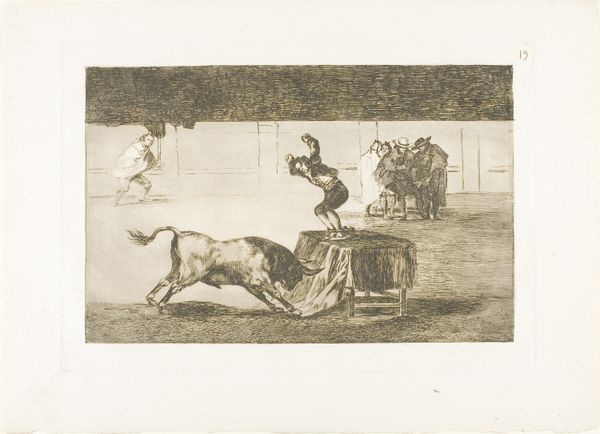
Oprindelsen til harpunerne eller banderillaerne 1815 - 1816
0:00
0:00
print, engraving
#
narrative-art
# print
#
figuration
#
romanticism
#
history-painting
#
engraving
Dimensions: 243 mm (height) x 350 mm (width) (plademaal)
Curator: Let’s take a closer look at "Oprindelsen til harpunerne eller banderillaerne," or "The Origin of Harpoons or Bandilleras," created by Francisco Goya between 1815 and 1816. It’s an engraving and is currently housed right here at the SMK. Editor: Whoa. My gut reaction is tension. The muted tones create a sense of foreboding; the matador and the bull are locked in a... a ritual dance of potential violence. Curator: Exactly. It’s potent, isn’t it? This image taps into a primal confrontation. Goya, steeped in Romanticism, uses bullfighting as a metaphor, exploring Spanish identity but also touching on more universal ideas: bravery, tradition, and death. Editor: Those billowing trousers! I'm also fascinated by the way the figures almost seem to fade into the background, making them feel less like individuals and more like symbols of the ritual itself. And that dark bull against the lightness? Drama! Curator: Absolutely. Light and dark are key. Etchings inherently use contrasting light, but here, Goya amplifies the effect to highlight the inherent drama. Bullfighting itself has deep symbolic resonance, think about Mithraic mysteries for example; for many cultures the bull represents strength, virility, but also a necessary sacrifice for communal wellbeing. Editor: You can feel it in your bones, that energy, can't you? Is it meant to be a commentary or... celebration? I mean, there is an erotic subtext, too. It feels deliberately unresolved. Curator: Probably both and more. Goya lived through tumultuous times. The Peninsular War had a profound impact and this piece can be viewed in part as a reflection of social and political upheaval using the metaphor of bullfighting. He explores power dynamics and collective emotion. The "correct" reading is never didactic in his body of work. Editor: Right. It gets under your skin and sticks. No tidy little moral there, just... feeling. The legacy. Curator: It leaves us with lingering questions, long after we’ve moved on. Perhaps that's the point.
Comments
No comments
Be the first to comment and join the conversation on the ultimate creative platform.

